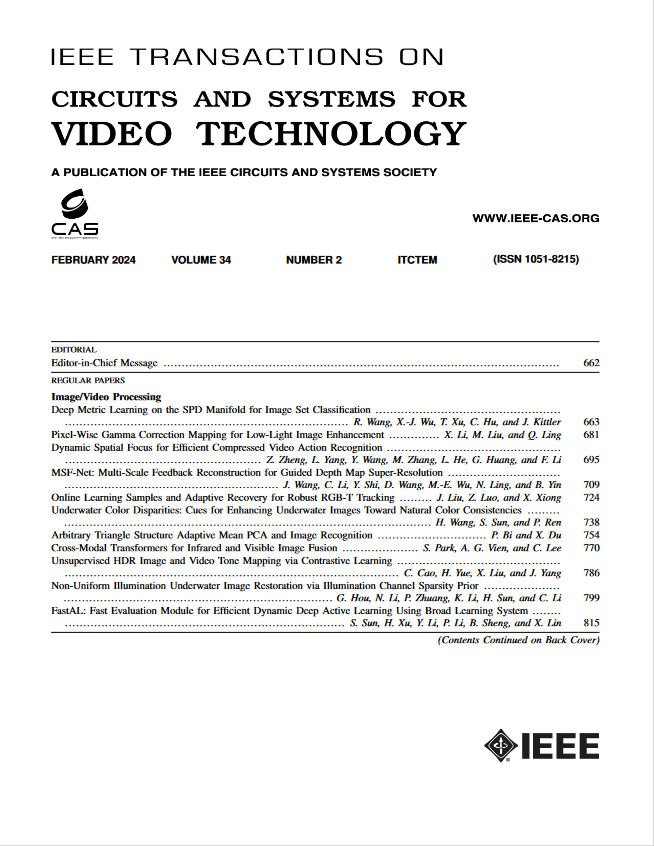Bridging Domain Gap of Point Cloud Representations via Self-Supervised Geometric Augmentation
IF 8.3
1区 工程技术
Q1 ENGINEERING, ELECTRICAL & ELECTRONIC
IEEE Transactions on Circuits and Systems for Video Technology
Pub Date : 2025-01-03
DOI:10.1109/TCSVT.2024.3525052
引用次数: 0
Abstract
Recent progress of semantic point clouds analysis is largely driven by synthetic data (e.g., the ModelNet and the ShapeNet), which are typically complete, well-aligned and noisy-free. Therefore, representations of those ideal synthetic point clouds have limited variations in the geometric perspective and can gain good performance on a number of 3D vision tasks such as point cloud classification. In the context of unsupervised domain adaptation (UDA), representation learning designed for synthetic point clouds can hardly capture domain invariant geometric patterns from incomplete and noisy point clouds. To address such a problem, we introduce a novel scheme for induced geometric invariance of point cloud representations across domains, via regularizing representation learning with two self-supervised geometric augmentation tasks. On one hand, a novel pretext task of predicting translation distances of augmented samples is proposed to alleviate centroid shift of point clouds due to occlusion and noises. On the other hand, we pioneer an integration of the self-supervised relational learning on geometrically-augmented point clouds in a cascade manner, utilizing the intrinsic relationship of augmented variants and other samples as extra constraints of cross-domain geometric features. Experiments on the PointDA-10 dataset demonstrate the effectiveness of the proposed method, achieving the state-of-the-art performance.基于自监督几何增强的点云表示域间隙桥接
语义点云分析的最新进展主要是由合成数据(例如ModelNet和ShapeNet)驱动的,这些数据通常是完整的、对齐良好的、无噪声的。因此,这些理想的合成点云的表示在几何角度上具有有限的变化,可以在点云分类等许多3D视觉任务中获得良好的性能。在无监督域自适应(UDA)的背景下,针对合成点云设计的表示学习很难从不完整和有噪声的点云中捕获域不变的几何模式。为了解决这一问题,我们引入了一种新的方案,通过正则化表示学习和两个自监督几何增强任务来诱导点云表示的跨域几何不变性。一方面,提出了一种预测增强样本平移距离的新借口任务,以减轻由于遮挡和噪声引起的点云质心偏移;另一方面,我们以级联的方式将自监督关系学习集成到几何增强点云上,利用增强变量和其他样本的内在关系作为跨域几何特征的额外约束。在PointDA-10数据集上的实验证明了该方法的有效性,达到了最先进的性能。
本文章由计算机程序翻译,如有差异,请以英文原文为准。
求助全文
约1分钟内获得全文
求助全文
来源期刊
CiteScore
13.80
自引率
27.40%
发文量
660
审稿时长
5 months
期刊介绍:
The IEEE Transactions on Circuits and Systems for Video Technology (TCSVT) is dedicated to covering all aspects of video technologies from a circuits and systems perspective. We encourage submissions of general, theoretical, and application-oriented papers related to image and video acquisition, representation, presentation, and display. Additionally, we welcome contributions in areas such as processing, filtering, and transforms; analysis and synthesis; learning and understanding; compression, transmission, communication, and networking; as well as storage, retrieval, indexing, and search. Furthermore, papers focusing on hardware and software design and implementation are highly valued. Join us in advancing the field of video technology through innovative research and insights.

 求助内容:
求助内容: 应助结果提醒方式:
应助结果提醒方式:


